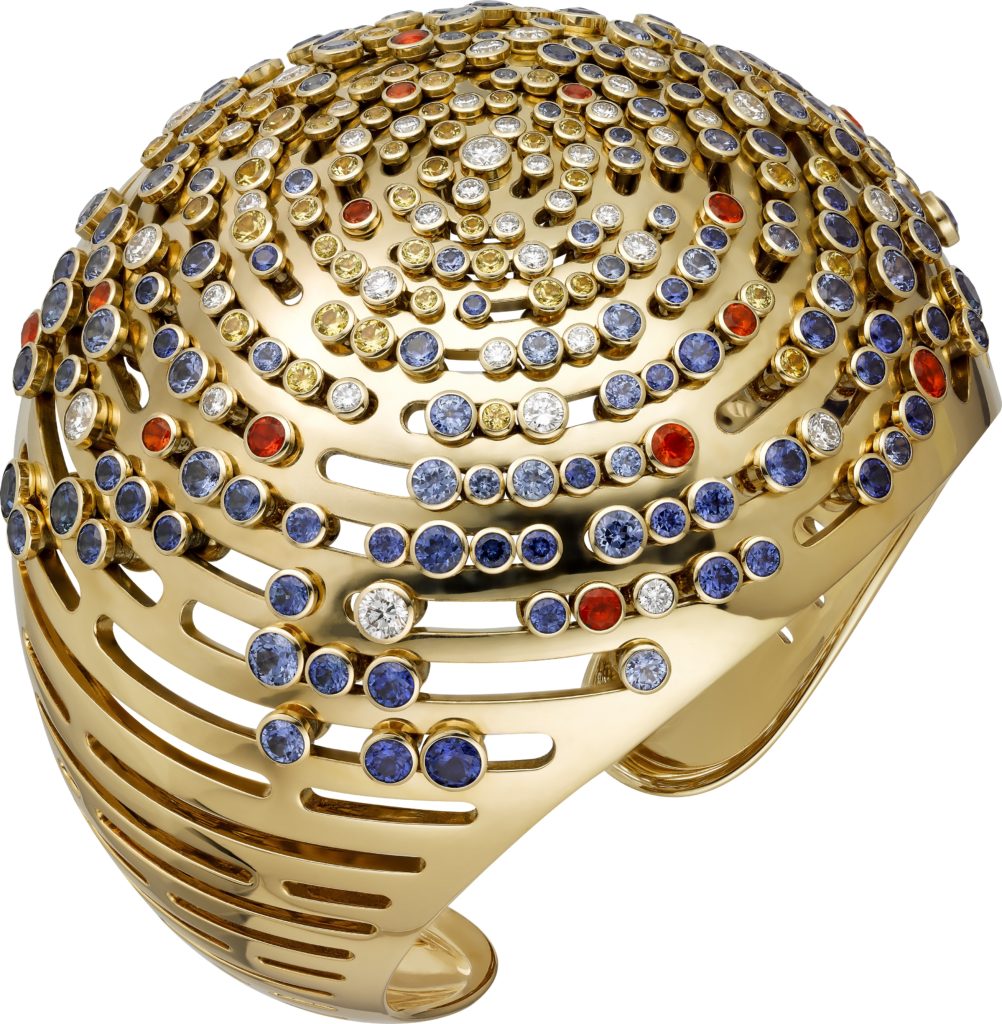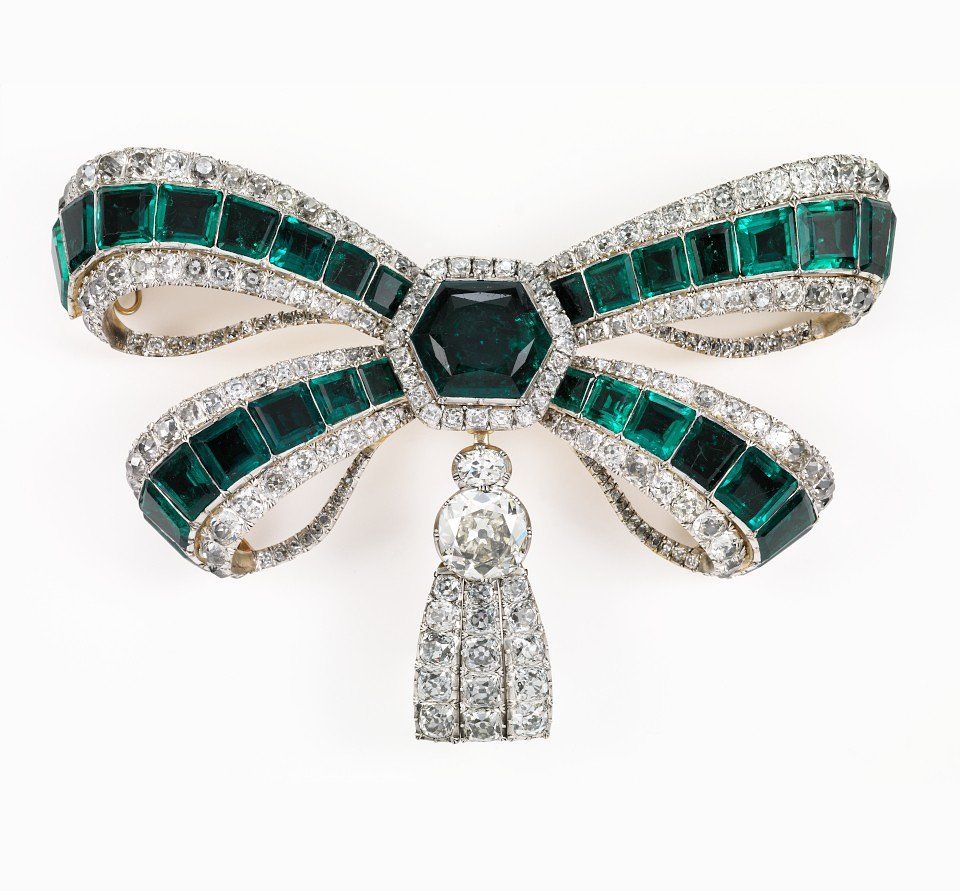Several months ago, I was told via Twitter about jewellery with painted portraits. So I propose a little recap on the history of these pieces. I won’t talk about cameos here, that will be for another time. I know these jewels well and I find them particularly beautiful and often moving. They are witnesses of past eras, before photography which seems so natural to us today. There are still objects with portraits today, I am thinking of objects published for example during election campaigns. They fulfil the same mission as those of past eras: to make a face known, to popularise it… etc.
Portrait jewellery has a history of about five centuries. The first notable pieces date from the Renaissance. This style of jewellery, truly popularised in the 17th and 18th centuries, would still find faithful followers until the beginning of the 20th century. The Romanovs, who were great consumers of jewellery and objets d’art (mainly made by the Fabergé House), had many examples made. The death of the imperial family marked the gradual end of this fashion. Another important reason was the advent of photography, which gradually replaced the painted and/or enamelled portraits in the frames from the end of the 19th century.
The main purpose of portrait jewellery is the dissemination of an image and representation. Most of the time, they represent important figures of the royalty and thus of the power in place but also of the ecclesiastical world. There are also portraits of the aristocratic, military and artistic world. Later (mainly in the 18th century), we will also find very personal jewellery, since these objects were also used to magnify beauty and to honour both the donor and the recipient. I am also thinking of the so-called “sentimental” jewellery, where it is possible to see the portrait of the lover that he or she offers to his or her bride and vice versa. The same is true of mourning jewellery (very common in the 19th century), where the portrait of the person whose face and memory you do not want to forget can be seen. Later on, imaginary portraits will also be found, mainly in costume jewellery. One will also find romantic, rural or religious scenes.
These pieces are international, they can be found in all countries. This fashion is therefore not specific to any one geographical area. Rings, pendants, earrings, buttons, medals… there are many examples.
As for the media, they are very different. The first portraits were mainly made on painted vellum. But with the evolution of techniques, we find portraits painted on wood, cardboard or paper, on ivory, on bone, on porcelain or on mother-of-pearl. Very often they are watercolours or pencil drawings. Concerning portraits on porcelain, one should not confuse painted portraits with decals (very common in the 20th century)… As for enamelled pieces, they are most often made on gold, in rare cases one will find copper. Finally, these portraits (when they are painted) are kept under glass so as not to deteriorate. These miniatures are integrated into jewellery made of gold, silver, platinum, vulcanite, jet, gilded and/or silvered metal..
The best way to understand is to show you some beautiful examples.
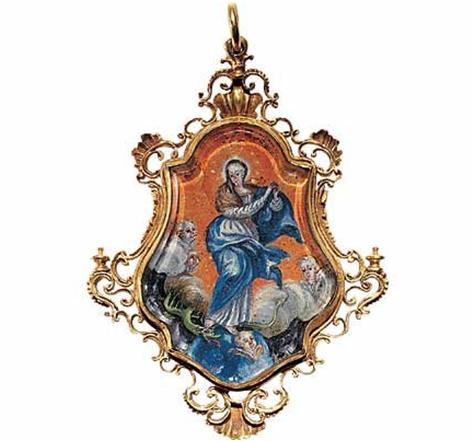
Gold pendant, crystal and miniature on ivory, Spain, 17th century. Musée des Arts Décoratifs de Paris, photo by Laurent Sully Jaulmes.
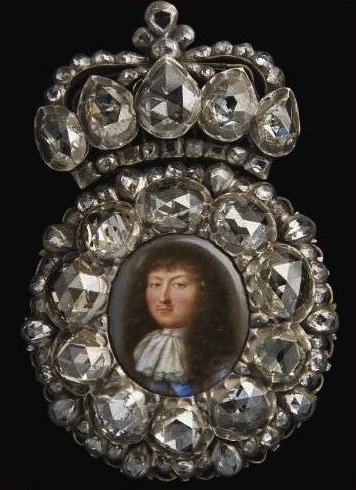
Gold and diamond pendant. Enamelled miniature representing Louis XIV. About 1680-1685. Louvre Museum, photo by Jean-Gilles Berizzi.

Gold and diamond ring. Miniature on ivory representing a young woman. 18th century. Private collection, photo by Ruddy Rouer.

Gold medallion and fine baroque pearls. Miniature on ivory and hair. It represents the Dauphin Louis-Charles de France, Duke of Normandy. Late 18th century. Photo: ©Château de Versailles, Dist. RMN-Grand Palais / Christophe Fouin

Shirt button with miniature on mother-of-pearl representing Napoleon. Gilt metal and glass, first half of the 19th century. MN of the Châteaux of Malmaison and Bois-Préau, photo Gérard Blot.

Portrait medallion representing Josephine. Gold, fine pearl, glass and miniature on ivory. First Empire. MN of the castles of Malmaison and Bois-Préau, photo Gérard Blot.

Gold bracelet and enamelled miniatures. This bracelet represents the imperial family. Second Empire. MN of the Palais de Compiègne, photo by René-Gabriel Ojéda.

Gold and amethysts brooch. Miniature on ivory under glass representing a woman’s eye ” Lover’s eye “, circa 1840. Private collection in London, photo by Sean Pathasema.
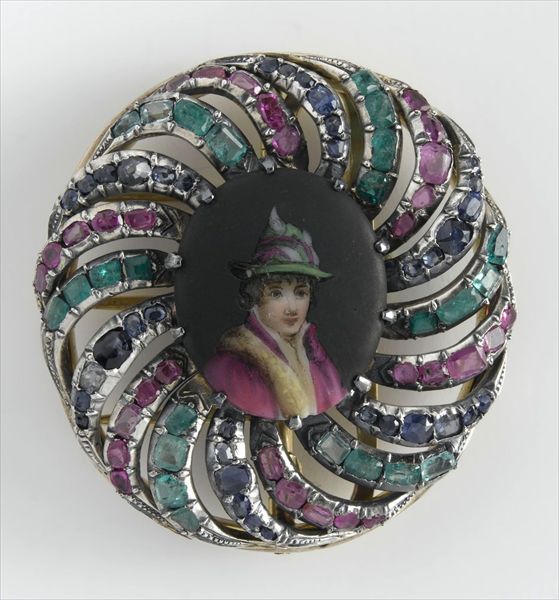
Gold, silver, sapphire, emerald and ruby belt buckle. Miniature painted on porcelain, late 19th century. MN of Malmaison and Bois-Préau castles, photo by Gérard Blot.
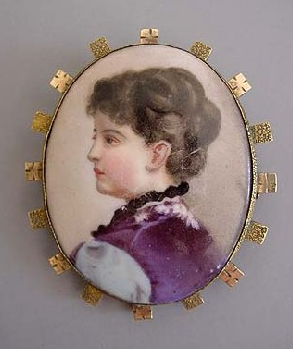
Fancy jewel in gilded metal with miniature painted on porcelain. About 1900 (Photo: Morning Glory Antiques and Jewelry)
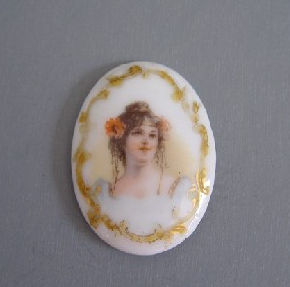
Miniature on porcelain with fancy portrait, decalcomania technique. Circa 1950. Photo: Morning Glory Antiques and Jewelry
See you soon!
Header image: Silver, gold and diamond brooch with miniature on ivory, circa 1840. Photo: Sotheby’s






